7 Climate and environment
7.1 Environmental goals and challenges
Through the Protocol on Environmental Protection to the Antarctic Treaty (the Environment Protocol), the treaty parties have designated Antarctica as a natural reserve, devoted to peace and science. As a polar nation in both the southern and northern hemispheres, Norway seeks to be a major force for conservation of the Antarctic environment and of Antarctica as a reference area for research on the significance of this region to global climate and environmental changes.
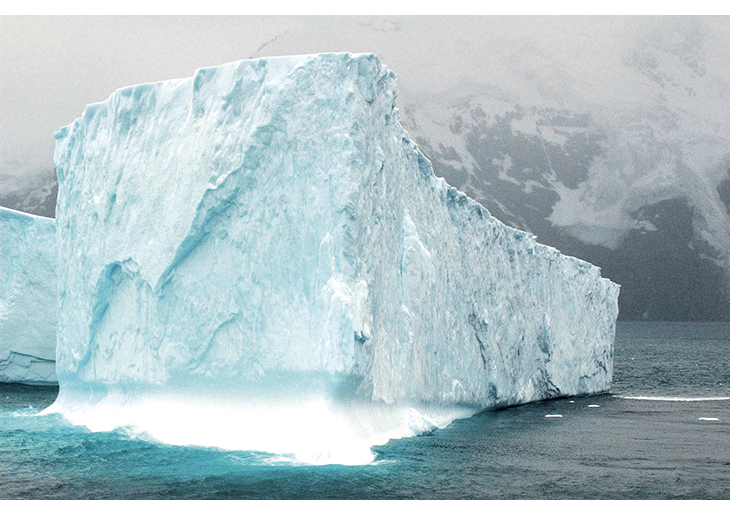
Figure 7.1 An iceberg off the coast
Photo: Bjørn Krafft, Institute of Marine Research.
In the past decade, a range of environmental measures have been carried out in accordance with the Environment Protocol. Today, Antarctica is one of the last large pristine areas in the world. The flora, fauna, ecosystems and cultural heritage in the Antarctic are under growing pressure from internal and external factors that interact in a complex network. Human activity on the continent is on the rise. New research stations are being built, and research activities are expanding. At the same time, more tourists are visiting the continent. There is also growing interest in the substantial biological resources in the marine areas around Antarctica. Moreover, pollutants recognise no borders, even though the level of environmental pollutants in the Antarctic is lower than elsewhere in the world. On top of it all, there is climate change. Together with the Arctic, the Antarctic plays a key role in the global climate system. The ice in West Antarctica alone contains sufficient water to raise the sea level by 4–5 metres. Accelerated melting of the Antarctic and Greenland ice caps would in practice be irreversible, leading to dramatic, global impacts. The consequences of the climate changes in the Antarctic are multiple and are liable to affect the living conditions of plants and animals.
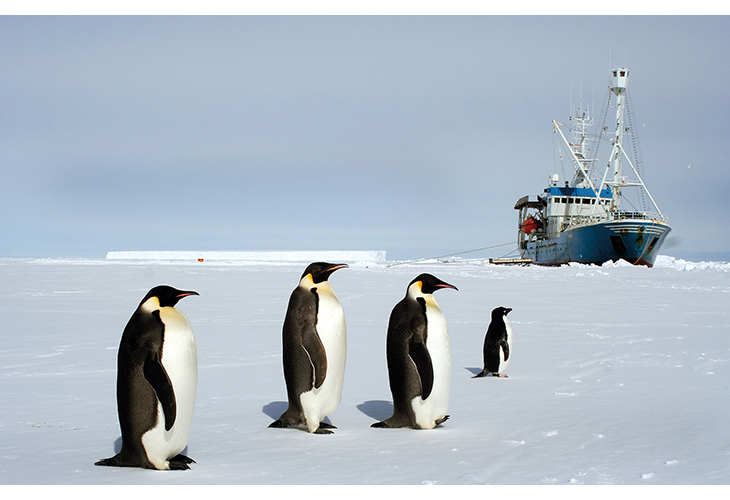
Figure 7.2 Penguins with the research ship Lance in the background.
Photo: Harvey Goodwin, Norwegian Polar Institute.
For the time being, none of the human activities in the area covered by the Antarctic Treaty takes place on a large scale, and individual factors of influence can scarcely be said to pose a major threat to the integrity of the Antarctic environment – with the possible exception of climate change, which could alter environmental conditions considerably in the long term. All the same, we know little about the effects of the combination of stresses on the environment, whether current or future, represented by climate change and other impacts. Climate change in tandem with increased human activity makes it wise to monitor developments and evaluate the consequences of such activity against the goal of conserving the Antarctic environment.
The Government will:
Ensure that Norway leads the way in addressing environmental issues in the Antarctic.
Work to ensure that the unique natural and cultural environmental values in the Antarctic are safeguarded and impacted as little as possible by local activity, and to impose stringent environmental requirements on all Norwegian activity in the Antarctic.
Work to ensure that Norway can make a significant contribution towards increasing environmental knowledge that can serve as a basis for environmental management in the Antarctic.
Textbox 7.1 Environmental values in Antarctica: A look at its flora and fauna
Antarctica is the coldest, windiest and driest continent on Earth. It has a total area of around 14 million km2, which doubles in the winter when the ocean ice stretches close to 1,000 km from the coast. About 98 per cent of the continent is covered with ice and snow, which accounts for more than 90 per cent of all the ice in the world.
The vegetation on the Antarctic continent is mainly a combination of algae, lichen and species of mosses. Two flowering plants have been recorded in the northern parts of the Antarctic Peninsula.
The seabirds of Antarctica find all their sustenance in the marine environment. They spend their entire lives at sea, going ashore only in the nesting season. Three groups of seabirds predominate in Antarctica: penguins, albatrosses and petrels.
The waters around Antarctica abound in algae, plankton and various species of crustaceans. Some 200 species of fish have been recorded south of the Antarctic Convergence. The Antarctic Convergence is a ‘front system’ where the cold surface water from the south meets and sinks below the warmer waters from the Atlantic, the Pacific and the Indian Oceans. In the food web, krill is a particularly important source of nutrition for predators higher up the food chain. Squid are also plentiful. Antarctic fur seals, crabeater seals, Weddell seals, leopard seals, southern elephant seals and Ross seals are all to be found in Antarctica. In the summer season, both toothed and baleen whales inhabit the ocean around Antarctica.
Some of the marine species remain in the Antarctic all year long, while others are only there in the summer, when these waters are rich in phytoplankton and zooplankton.
7.2 A simple, yet very complex, biological environment
The Antarctic continent is species-poor. The terrestrial and freshwater ecosystems represent some of the simplest systems in the world and are the endpoint of the global gradient in diversity. However, biodiversity in the ocean is both varied and rich, and more than 9,000 species have been recorded, ranging from microbes to whales.
Many of the animal species, both aquatic and terrestrial, are endemic. They exist nowhere else. They have evolved in extraordinary, isolated surroundings and have adapted to the extreme conditions in the south.
Despite the extensive research carried out in the Antarctic, there are still significant gaps in our knowledge as to which species are present, where they are found and how abundant they are. Our view of the status of environmental values in the Antarctic is therefore incomplete. We are also challenged in accessing all the existing knowledge on the status of Antarctic environmental values. Initiatives such as the Antarctic Environments Portal (www.environments.aq), a web portal and channel of information designed to provide the Antarctic Treaty System’s Committee for Environmental Protection (CEP) with easy access to up-to-date research findings on the Antarctic environment, form an important basis on which to improve resource assessments and ensure sound scientific recommendations for decision-making within the Treaty System.
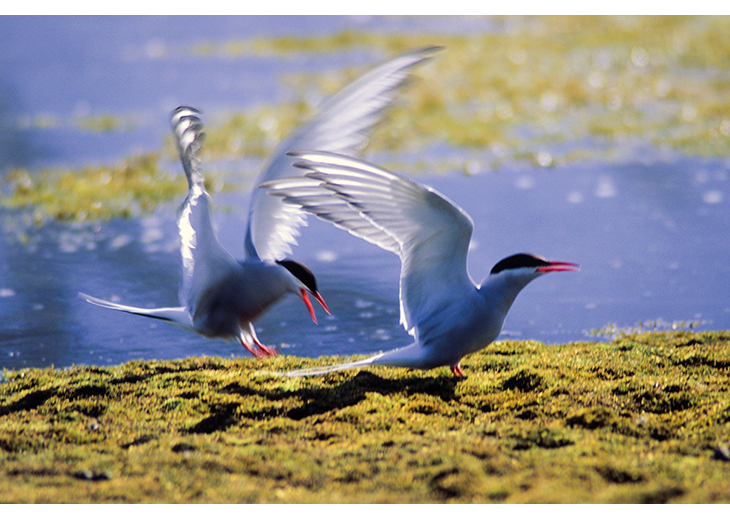
Figure 7.3 Arctic terns fly around the globe. They nest in Svalbard and then fly south to spend the spring and winter (South Pole summer) in the pack ice of the Southern Ocean.
Photo: Tor Ivan Karlsen, Norwegian Polar Institute.
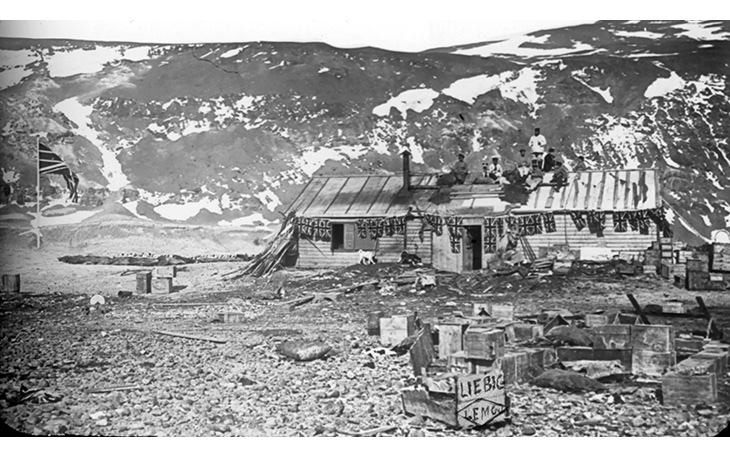
Figure 7.4 Carsten Borchgrevink’s cabin at Cape Adare, New Year’s 1900.
Photo: Norwegian Polar Institute.
7.3 Cultural heritage
The physical traces left by expeditions, harvesting and research in the Antarctic now constitute a significant bank of knowledge and experience of former activity in the region. They are also important in an international perspective. Among the 90 cultural heritage assets placed on the list of historic sites and monuments approved by the Antarctic Treaty Consultative Meeting (ACTM) in 2014, there are nine objects testifying to early Norwegian activity on the continent.
Norwegian cultural heritage policy on the Antarctic aims to ensure that important historical assets stemming from Norwegian activity are safeguarded. Norway’s active participation in international efforts to conserve cultural heritage in the Antarctic is integral to the country’s policy and its cooperative role under the Antarctic Treaty.
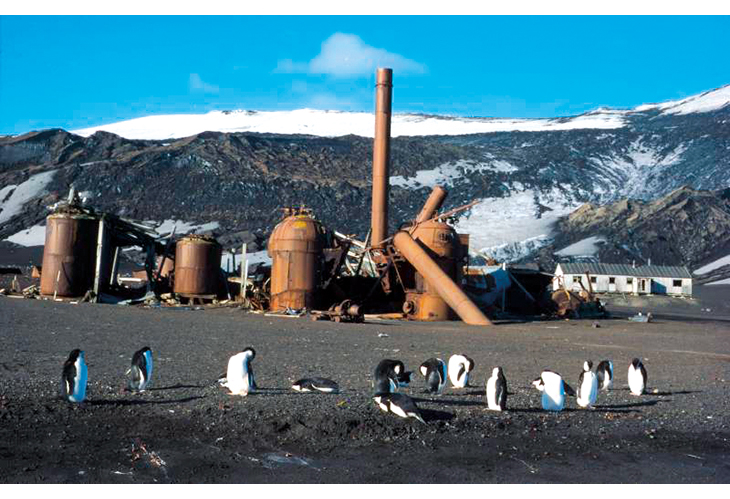
Figure 7.5 The whaling plant at Whalers Bay. Deception Island is an important Norwegian cultural heritage site.
Photo: Norwegian Polar Institute.
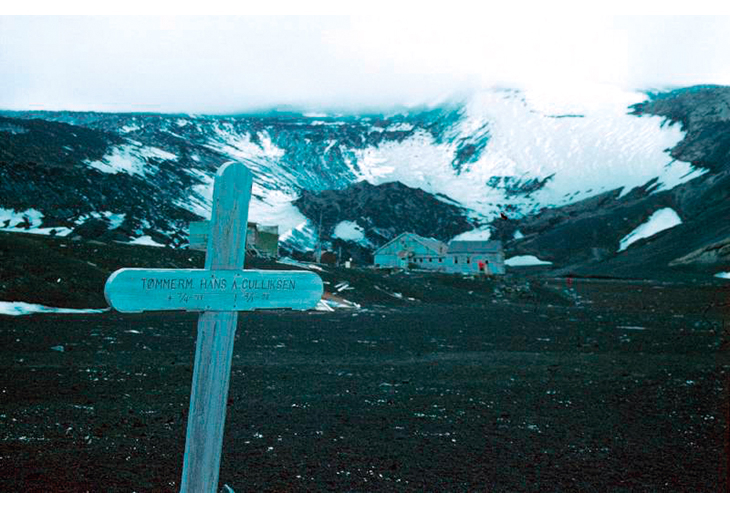
Figure 7.6 Norwegian heritage sites in Whalers Bay.
Photo: Norwegian Polar Institute.
The Directorate for Cultural Heritage has compiled as much information as possible on the state of Norwegian cultural monuments in the Antarctic. For logistics reasons, it is extremely difficult to obtain a complete, up-to-date overview, particularly of cultural heritage sites relating to early sealing and whaling activity. Since the most important and best-known sites and objects are located in the claim areas of other countries, international cooperation is important and sometimes the key to implementing measures. Norwegian protection and conservation measures have been carried out in accordance with a detailed priority list, and in line with political guidelines set out in Report No. 16 (2004–2005) to the Storting Living with Our Cultural Heritage.
Protecting and repairing cultural heritage assets in the Antarctic present special challenges. The natural process of decay is one. Another is the increase in traffic and its potential negative impacts. Cultural heritage sites are a popular tourist destination. Whalers Bay Historic Site on Deception Island, for example, is one of the two most visited places in Antarctica every year. Protection and restoration also pose practical challenges. In the case of some cultural heritage assets, it is neither possible nor advisable to initiate conservation measures. Particularly valuable cultural heritage sites can be protected by putting in place preventive measures.
A number of new research stations have been built in Antarctica. The construction of new buildings also entails the closure of other station buildings and other types of research facilities. In some cases, the treaty party that owns disused buildings wishes to protect them for their historical significance. This raises a range of issues, and the question of cultural heritage value must be considered in light of the provisions in the Environment Protocol regarding clean-up when an activity has been discontinued. Norway considers it important that issues relating to cultural heritage management and assessment of cultural heritage status are placed on the Antarctic Treaty cooperation agenda.
The protection and conservation of historical values and cultural heritage sites in Antarctica are a stated objective in the Environment Protocol to the Antarctic Treaty. The Norwegian authorities are therefore actively committed to protecting and safeguarding evidence of Norway’s cultural heritage in Antarctica.
This includes a number of cairns, C. A. Larsen’s shelter on Paulet Island and Carsten Borchgrevink’s two huts at Cape Adare. Other historical remains include the Whalers Bay whaling station and the cemetery on Deception Island. Also on the list is Roald Amundsen’s South Pole tent. All nine of these objects are located outside Norway’s claim areas in the Antarctic. A cairn in Dronning Maud Land left by a mapping team from the Maudheim expedition in 1949–52 may be a candidate for addition to the list of historic sites and monuments.
In 2011, in connection with the centennial celebration of Roald Amundsen’s expedition to the South Pole, the Government pledged funding for the restoration of the two Borchgrevink huts at Cape Adare. The Norwegian Directorate of Cultural Heritage is working with the New Zealand Antarctic Heritage Trust on this conservation project.
It is no longer possible to actively maintain all or parts of the Whalers Bay Historic Site. The Directorate of Cultural Heritage documented the historical remains in 2002 and again in 2014, and their deterioration was deemed to be so advanced that they are being abandoned to further natural decay. Norway has promised funding to organise archival materials from the whaling company so as to facilitate historical research, and in collaboration with the UK Antarctic Heritage Trust Norway now provides information to visitors describing and explaining the historical remains of the whaling era.
With regard to the other Norwegian cultural heritage assets on the ATCM’s list of historic sites and monuments, which are mainly the cairns, supervision is not always practically possible. However, we do know that the grave (the first on the continent) of biologist Nicolai Hanson, who died at Cape Adare in 1900, is in good condition and is tended whenever anyone visits the site. Amundsen’s tent will be left untouched under the ice out of regard for its cultural value. The ruins of C. A. Larsen’s stone hut on Paulet Island, which is also a Swedish cultural heritage site due to its link with Otto Nordenskjöld’s Antarctic expedition in 1903, is the only other cultural heritage monument that may be considered for conservation.
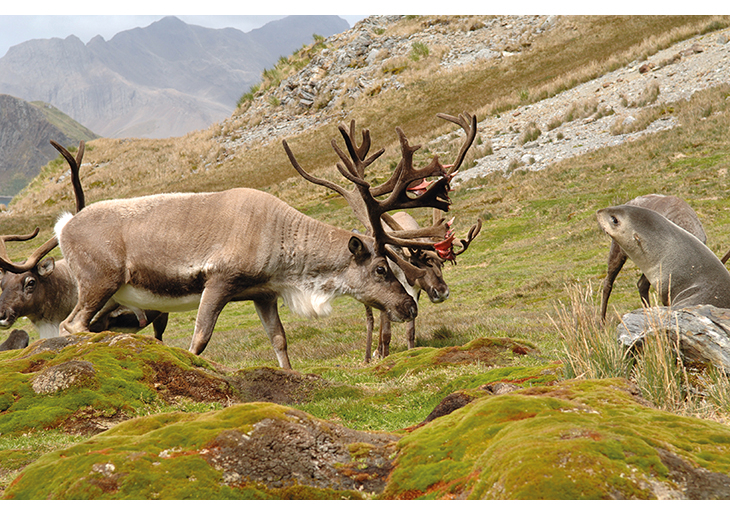
Figure 7.7 Reindeer in South Georgia, introduced by Norwegian whalers from 1911 onwards. In 2014 the stock was removed for environmental reasons.
Photo: Kit M. Kovacs and Christian Lydersen, Norwegian Polar Institute.
The Government will:
Secure important Norwegian cultural heritage sites in Antarctica.
Continue Norway’s participation in international cooperation on protecting and conserving particularly important historical remnants.
7.4 External impacts – hard to control
The external environmental impacts caused by activities outside Antarctica probably have a greater effect on the state of the environment in Antarctica than activities carried out on the continent itself. Of primary importance in this regard is climate change.
7.4.1 Climate change
Along with the Arctic, the Antarctic plays a key role in the global climate system. Scientists have long thought that the ice in the inner part of the Antarctic continent was unaffected by the global warming trend. However, new research shows that the entire continent is warming up, a process that appears to have taken place over the last 50 years.
Global climate change will affect both the physical and biological environments in Antarctica, and could significantly change the very character of the continent. The most vulnerable freshwater systems are located on the northern Antarctic Peninsula and the Antarctic islands, where just a small rise in temperature could have wide-ranging effects on ecosystems.
The sea ice in the Antarctic is important in several ways. Climate change could have an impact on krill and thereby also on the Antarctic marine ecosystem. An anticipated trend towards warmer, fresher water, stronger westerly winds and a gradual move of the front system in a southerly direction could cause species at all levels of the food chain to move further south, depending on the conditions the species prefer. If the sea ice cover is reduced, the Antarctic krill population is expected to decline in range and be negatively affected by ocean acidification. The climatic effects on krill are expected to vary substantially from one place to another, but the sum of knowledge today indicates that a warmer climate will bring negative change due to the link between the ice cover and krill.
Decline in the population of several species of penguin has been documented in large parts of the Antarctic1. The combination of the anticipated deterioration in ice conditions and changes in the food chain as a result of climate change could affect these species2.
A warmer sea opens the possibility of new species being able to move into these waters, with unknown consequences for the present Antarctic marine environment.
7.4.2 Pollution
There is little indication that the Antarctic is affected by the long-range transport of pollutants to the same extent as the Arctic. Environmental contaminants have indeed been found in animals in the Antarctic, but the substances registered here are different. For instance, high levels of insecticide and pesticide (Mirex and HCB) transported to the region from far away have been found in the south polar skua, a seabird in Dronning Maud Land. Few studies have been made to date of the effects of these substances on the fauna of Antarctica, and it is important that we learn more. Mapping the pollution situation in the Antarctic is an important part of the atmospheric research programme that has now been established at the Troll station. At the Troll air pollution measurement facility, the Norwegian Institute for Air Research (NILU) has recorded long-range transboundary air pollution from the fires causing deforestation in the Amazon Basin.
7.4.3 Depletion of the ozone layer
The ozone layer protects all life on earth from the sun’s harmful ultraviolet radiation. Emissions of substances like chlorofluorocarbons (CFCs) and halon deplete the atmospheric ozone layer, causing areas of low ozone concentration. Global emissions of ozone-depleting substances have declined significantly since the mid-1980s as a result of commitments made in the Montreal Protocol of 1987 on protection of the ozone layer. The ozone layer is now showing signs of thickening, but will still take decades to fully recover. At the end of September 2006, the ozone hole over the Antarctic was the largest ever observed, and the World Meteorological Organization and the UN Development Programme believe it unlikely that the ozone layer over the Antarctic will be fully recovered until 2065.
7.4.4 Ocean acidification
Man-made emissions have increased the amount of carbon dioxide (CO2) in the atmosphere and the ocean. Ocean acidification takes place when CO2 reacts with seawater, forming carbonic acid and lowering the pH level of the water.
The ocean takes up huge quantities of carbon in the water, in the sea floor and through the photosynthetic activity of phytoplankton and other organisms. Thus the ocean functions as a carbon storehouse, and has absorbed around 30 per cent of man-made CO2 emissions.
The waters around Antarctica contain more CO2 than other marine areas because cold water absorbs more CO2 than warmer water. The consequences of ocean acidification will therefore be visible first in cold waters. Acidification is expected to accelerate and increase in scope as this century progresses. The ocean’s degree of acidity can affect the shell formation process of certain marine organisms and impair their ability to function. Many of these organisms are key species in the food chain, providing vital sustenance for krill, fish, squid, penguins, seals and whales. Scientists have a crucial task in understanding the mechanisms behind ocean acidification and its effects on ecosystems.
So far, only a few studies have focused on the effects of ocean acidification on commercial species in the Antarctic. However, research has shown that a rise in the ocean’s acidity can have a negative impact on krill in the early stages of development.
The effects of climate change and ocean acidification can also lead to ecosystems becoming less resilient to other impacts.
The Government will:
Preserve the continent as a reference area for research on the effects of global environmental and climate changes and research on the role of the Antarctic in the global climate system.
Work to adapt Antarctic environmental management to climate change.
7.5 Growing activity poses a challenge to environmental objectives
7.5.1 Expansion of infrastructure
The scale of research infrastructure has increased substantially in the last 50 to 60 years, with about 70 summer and year-round research stations currently operating on the continent. The stations are scattered across a large geographical area, and many are situated near the most biologically attractive areas on and near the Antarctic Peninsula. Meanwhile, several new stations have been built in the more deserted areas of the continent, in the process reducing its expanse of untouched territory. Several countries have given notice of plans to erect new stations. Some of these countries have previously had no stations, but some of the major Antarctic players are also increasing the number of their stations.
7.5.2 Growing traffic pressure
The number of visitors to Antarctica is steadily growing. While only around 5,000 tourists came to the Antarctic in the course of a summer season 20 years ago, today just under 40,000 tourists arrive every year, after a slight decline in the years around 2010. Most of these tourists go ashore in the areas with special natural or cultural heritage values around the Antarctic Peninsula. Only a handful of tourists visit other parts of Antarctica, but these areas too have become more accessible over the years, resulting in more human activity and impact in areas that were formerly completely unspoiled.
The lack of knowledge regarding biological deposits and impacts at the busiest visit sites, among other matters, makes it difficult to determine how the increase in traffic will affect the natural and cultural environments, or to gauge the potential magnitude of these effects.
The rise in research, fishing and tourist activity also entails an increase in ship traffic in the Antarctic. This creates a greater risk of adverse environmental incidents as well as acute harm to the environment. In the past few years, there have been a number of incidents of varying severity.
Most of the regulatory framework for ship traffic is international. The main conventions have been drawn up by the UN’s specialised shipping authority, the International Maritime Organisation (IMO). Rules for ships sailing in the Antarctic must therefore be negotiated and enacted through the IMO to ensure the creation of a global regime governing every country and flag.
7.5.3 Harvesting and catches
Toothfish and krill are the main species fished in the waters around Antarctica, where krill play a key role in the ecosystem.
Fishing regulated under the CAMLR Convention does not pose any real threat to the biological marine system in the Antarctic, because resource management is based on the ecosystem principle. In future, it will be important also to take account of the effects of climate change when determining the annual catch quotas for krill. The Antarctic krill biomass is expected to decrease due to reduction of the sea ice cover, and to be adversely impacted by ocean acidification. Even if the abundance of krill were to remain at the present level, krill could stay at greater depths for longer periods so as to avoid warmer, fresher surface water. This could lead to krill spending less time in the shallow shelf areas, where they are normally available to fishermen and to seals and seabirds (including penguins) that are dependent on krill and reproduce on land. The information available about the effect of climate change on krill stocks is considered by CCAMLR during its annual krill stock assessments.
7.5.4 Introduction of non-native species
The introduction and spread of alien species is a growing global problem. The risk of their finding their way to the Antarctic is increasing with the rise in human activity and transport. Introduction of non-native species has been documented, primarily on land, but some non-native marine species have arrived, too. Some that have become established in Antarctica have done so by expanding their habitat. These species can be considered invasive, rather than introduced species. Alien species can do extensive damage wherever they establish themselves, and can be the cause of significant changes in the ecosystem. Introduced species can also be bearers of diseases capable of destroying a natural system that has not built up immunity to those diseases.
The Government will:
Work towards holistic, ecosystem-based management of the marine and terrestrial environment in the treaty area, with particular focus on protecting vulnerable areas of special value.